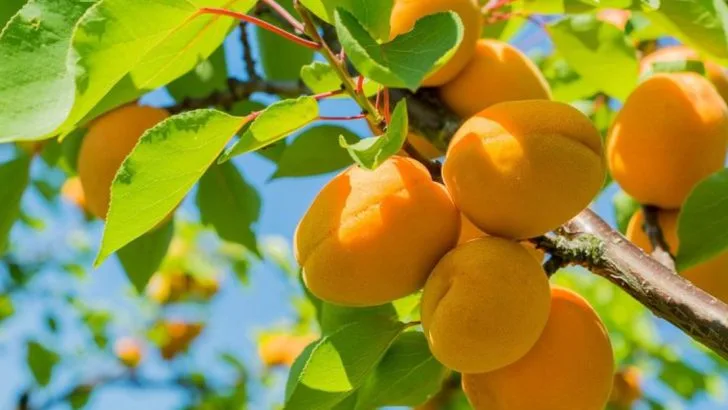Hot and dry climates present unique challenges for gardeners, especially when it comes to growing fruit trees. Scorching sun, minimal rainfall, and poor soil can make it tough for many trees to thrive—but that doesn’t mean your dream of harvesting homegrown fruit is out of reach. In fact, there are several heat-tolerant fruit trees that not only survive but flourish in arid conditions.
This list features 16 of the most resilient fruit trees for drought-prone regions, from figs and pomegranates to jujubes and olive trees. These trees are not only adapted to thrive with minimal water, but many also produce delicious, nutrient-rich fruit that grows reliably even under tough conditions. Perfect for desert gardens or sunbaked backyards, these picks are both low-maintenance and high-reward.
Pomegranate
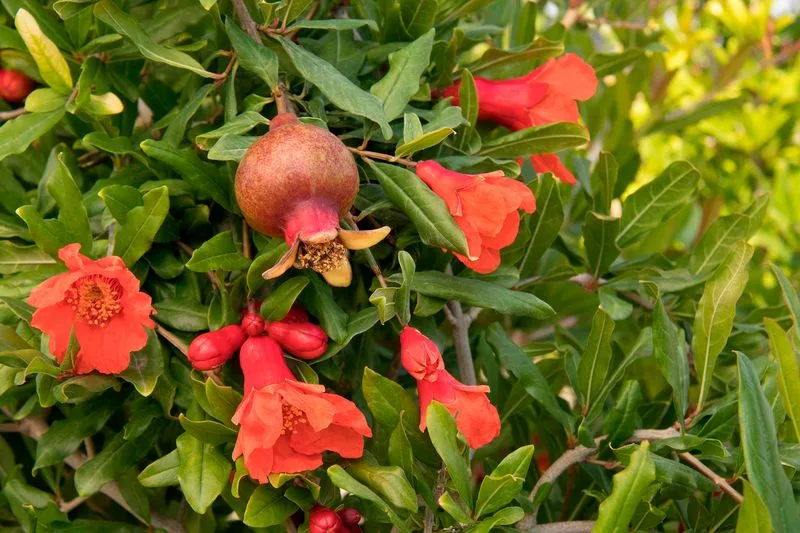
Known for its jewel-like seeds, the pomegranate is a standout in the orchard. Its tough skin shields the juicy interior, making it a perfect match for dry climates. The tree delights with vibrant blossoms in spring, transitioning into a bounty of red fruits by autumn.
Beyond its beauty, this tree is low-maintenance, needing minimal water once established. The sweet-tart fruits can be enjoyed fresh, juiced, or as a culinary accent. With its historical roots tracing back to ancient Persia, the pomegranate carries a legacy of both beauty and resilience.
Fig
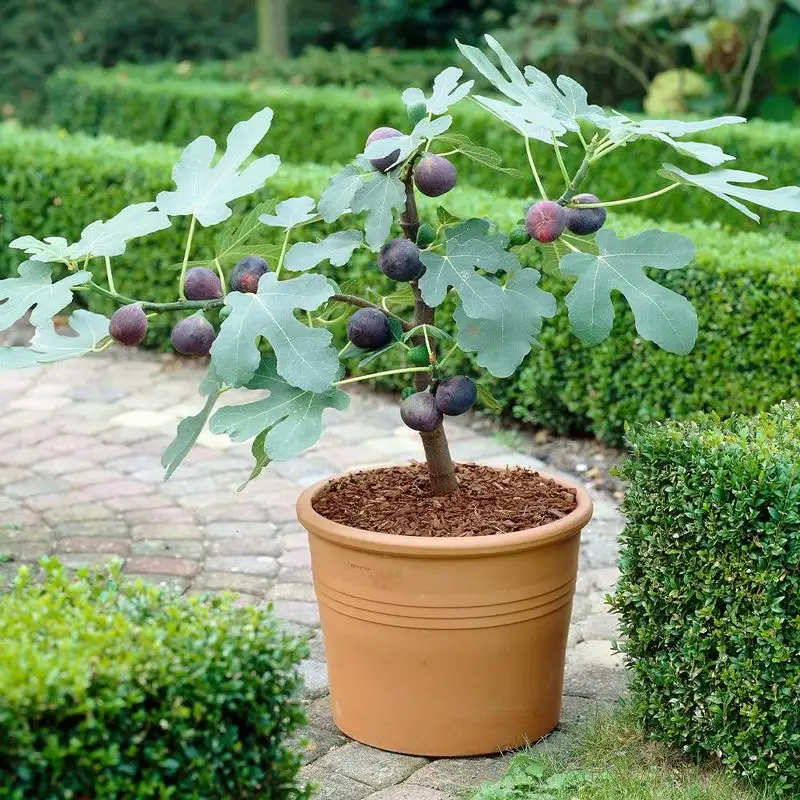
Figs, with their luscious texture and honeyed sweetness, offer a treat that few can resist. The tree’s broad, lobed leaves create dappled shade, providing a respite in the heat of summer.
Requiring little care, figs are ideal for those who want productivity without the fuss. As the fruits ripen, their skins turn deep and inviting, promising a delightful snack or a gourmet addition to dishes. A symbol of prosperity, fig trees have been cherished since ancient times, often standing as the heart of Mediterranean gardens.
Olive
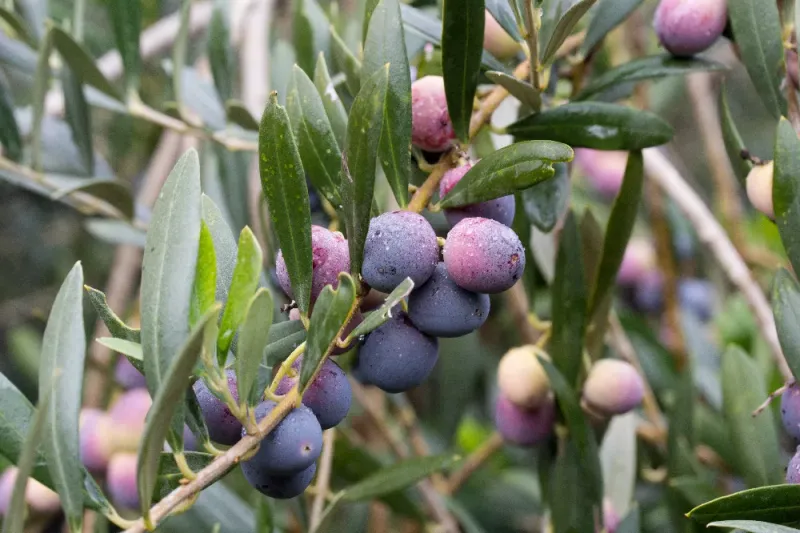
Olive trees, revered for their enduring nature, bring a touch of the Mediterranean to any dry garden. Their silver-green leaves glint under the sun, while the gnarled trunks tell stories of seasons past.
These trees are remarkably drought-tolerant, producing fruits that are not only delicious but also rich in history and health benefits. Whether pressed into oil or cured for snacking, olives offer versatility. With their roots deeply embedded in culture and cuisine, cultivating an olive tree is like adding a piece of tradition to your home.
Date Palm
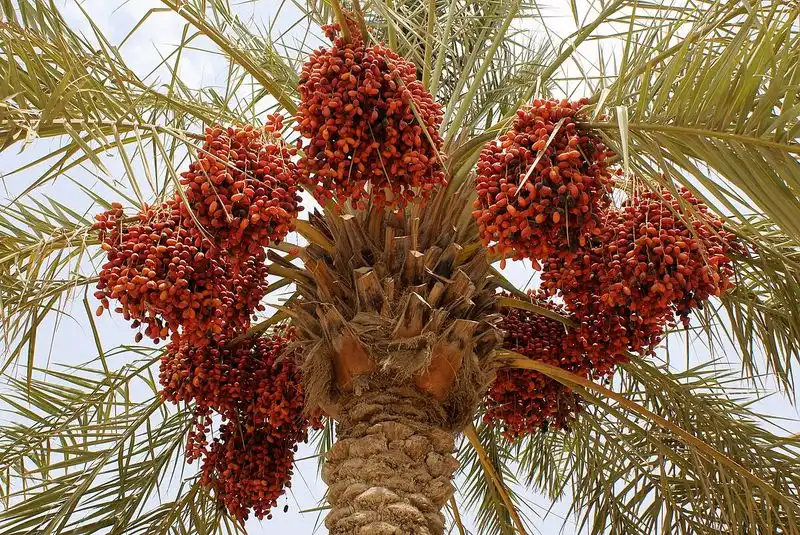
The date palm stands tall, a symbol of life in the harshest of climates. Its feathery fronds sway gently, offering shade and a touch of elegance to any arid landscape.
Dates, with their sweet, caramel-like flavor, are harvested from these majestic trees. Resilient against drought, they require little more than sunshine and occasional watering to prosper. As a staple in Middle Eastern cuisine, dates have been treasured for centuries, both for their taste and nutritional value. Plant a date palm, and watch as it transforms your garden into a paradise.
Citrus
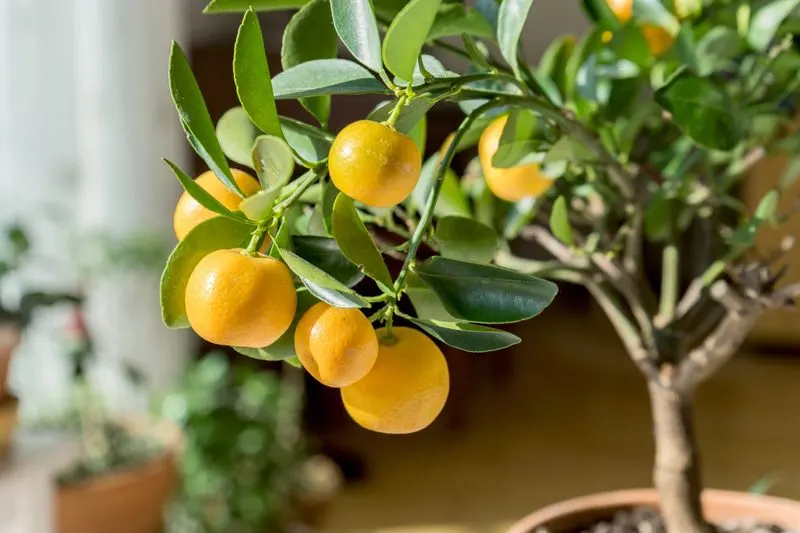
Bursting with color and fragrance, citrus trees are a delightful addition to warm climates. Oranges, lemons, and limes not only brighten up the garden but also the culinary repertoire.
Their glossy leaves and aromatic blossoms herald a bounty of juicy fruits. Adapted to withstand dry spells, these trees thrive with minimal care. Enjoying a fresh-squeezed glass of juice from homegrown citrus is a luxury worth cultivating. Each fruit carries the essence of sunshine, adding zest to everything from salads to desserts.
Apricot

Apricot trees, with their golden-hued fruits, bring a sunny disposition to any garden. These trees bloom with light pink flowers in spring, a prelude to the juicy harvest that follows.
Well-suited for warm, dry regions, apricots need little more than sunshine and well-drained soil. The fruits, sweet with a hint of tartness, are perfect for fresh eating or preserving. Known for their quick growth, apricot trees offer a taste of summer in each bite, complementing both sweet and savory dishes beautifully.
Almond
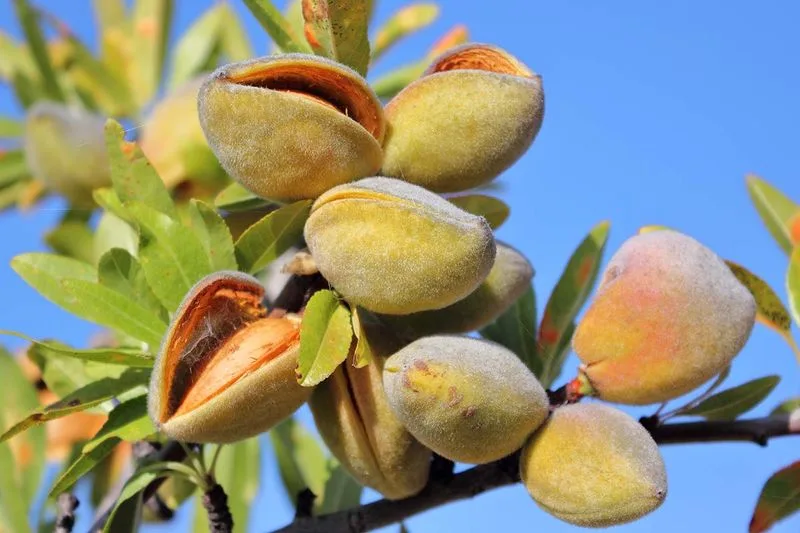
Almond trees bring both beauty and bounty to dry landscapes. In early spring, they flaunt delicate pink blossoms, a breathtaking sight against a sunlit backdrop.
These trees are excellent for arid climates, requiring minimal water while providing a harvest of nutritious almonds. The nuts, encased in tough shells, are versatile ingredients in both sweet and savory dishes. Almonds have long been valued for their health benefits, making these trees a wise choice for those looking to combine aesthetics with functionality in their garden.
Pistachio

Pistachio trees, with their unique branching patterns, are as striking as they are productive. Clusters of the beloved green nuts dangle invitingly, ready for harvest.
Thriving in hot, dry conditions, pistachios are a favorite among snack aficionados. Their growth requires patience, as the tree matures slowly, but the eventual yield is well worth the wait. Pistachios add a gourmet touch to dishes and are celebrated for their rich, savory flavor and vibrant color. Cultivating these trees brings a touch of the exotic to the everyday garden.
Mulberry
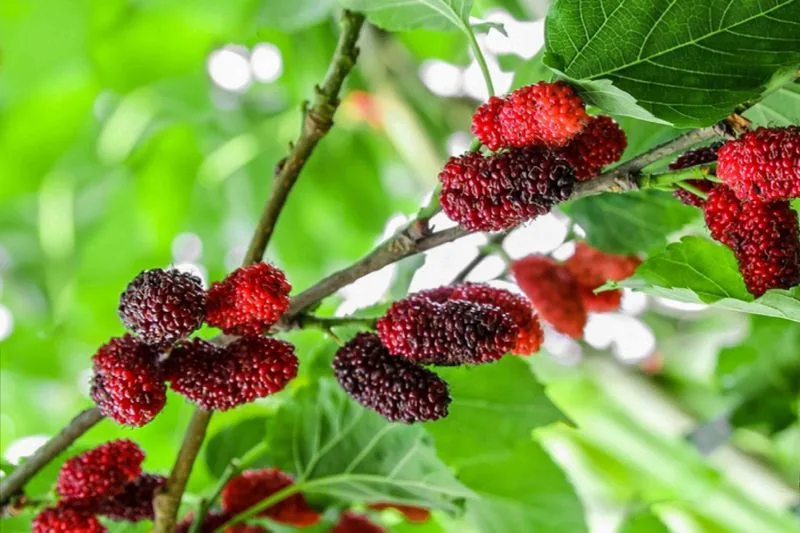
Mulberry trees stand resilient, their graceful branches laden with berries that shift from red to dark purple as they ripen. These fruits, juicy and sweet, bring a burst of flavor to hot climates.
These trees are versatile, thriving in various soil types and requiring minimal care. Mulberries are perfect for fresh eating or can be transformed into jams and desserts. Known for their rapid growth, they quickly provide both shade and sustenance. The mulberry tree’s rich history in silk production adds an intriguing cultural layer to its appeal.
Jujube
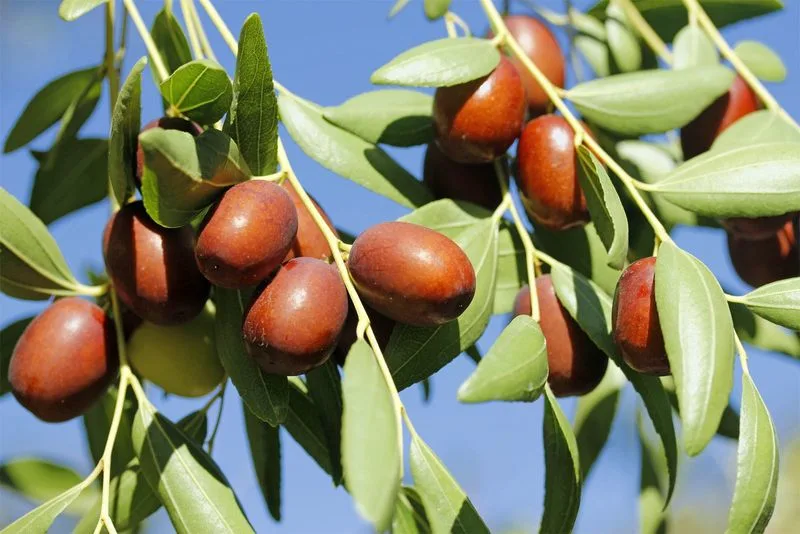
Jujube trees, often dubbed “Chinese dates,” are resilient wonders suited for arid conditions. The small, oval fruits transition from green to a deep red-brown, offering a sweet, apple-like crunch.
These trees are low-maintenance, thriving in poor soils and demanding little water. Jujubes are enjoyed fresh, dried, or candied, adding versatility to their allure. Known for their long lifespan and historical importance in traditional medicine, jujube trees offer both beauty and utility. Their introduction to your garden promises an exotic twist to the conventional fruit offering.
Guava
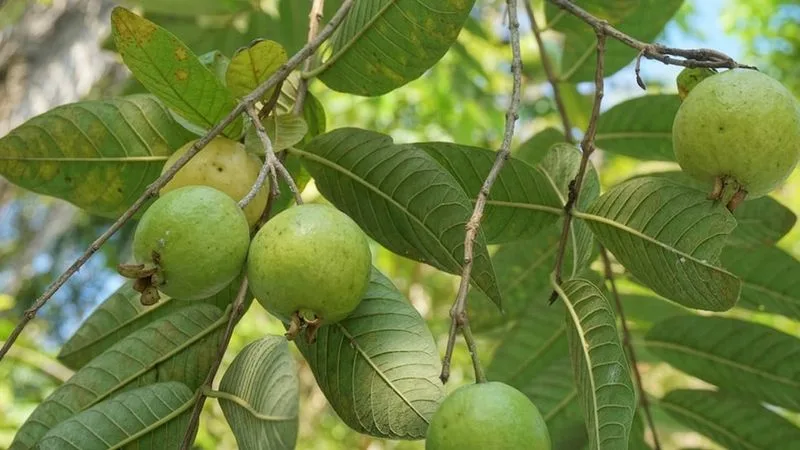
Guava trees, with their vibrant green fruits, infuse gardens with tropical charm. These fruits, fragrant and juicy, promise a delightful taste experience, reminiscent of the tropics.
Suitable for warm climates, guavas require minimal care, thriving in well-drained soil. Whether eaten fresh, juiced, or made into jellies, guavas are versatile and nutritious. Their rapid growth and year-round fruiting make them a favorite for those seeking quick results. With origins tracing back to Central America, guavas bring a slice of paradise to your backyard.
Quince
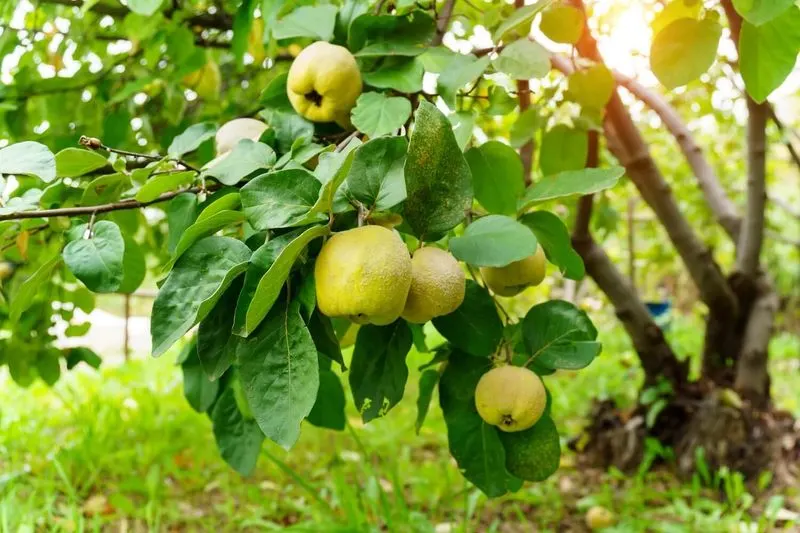
Quince trees, with their gnarled branches, offer a rustic charm that’s hard to resist. The golden-yellow fruits are aromatic and ideal for making jellies and preserves.
These trees thrive in dry, sunny climates, needing little attention once established. Quince fruits are known for their unique fragrance and tart flavor, often used to enhance desserts and savory dishes alike. Historically significant in various cultures, quince trees add both a visual and culinary dimension to gardens, making them a delightful choice for the home orchard.
Loquat

Loquat trees, with their glossy leaves and bright yellow fruits, inject a splash of color into dry landscapes. The fruits, sweet and tangy, are a delightful treat, often enjoyed fresh or in jams.
Well-suited for hot climates, these trees require minimal care and are known for their rapid growth. Loquats are not only delicious but also packed with nutrients, making them a healthy addition to any diet. Originally from China, loquats have been embraced worldwide for their unique flavor and ornamental appeal, offering both beauty and bounty.
Persimmon

The persimmon tree, adorned with glowing orange fruits, brings warmth to any garden. Known for their sweet, honeyed taste, persimmons are a seasonal delight.
These trees are easy to grow, thriving in well-drained soil and needing little more than sunshine to flourish. The fruits are versatile, perfect for fresh consumption or as an ingredient in baked goods. With origins in Asia, persimmons have a rich cultural heritage, adding depth to their appeal. Cultivating a persimmon tree offers both visual pleasure and a taste of history.
Carob
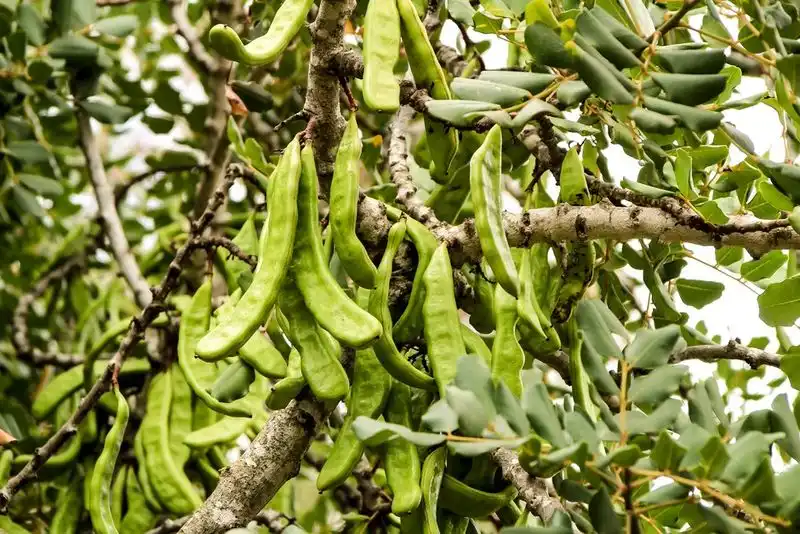
Carob trees, with their sturdy branches and lush foliage, offer a unique twist in arid gardening. The long, dark pods they bear are a natural sweetener, often used as a chocolate substitute.
Thriving in dry and rocky soils, carob trees are both hardy and productive. The pods can be ground into flour or enjoyed as a snack, providing a healthy alternative to traditional sweets. With their Mediterranean roots, carob trees bring a touch of the exotic to any orchard, promising both novelty and nourishment for adventurous gardeners.
Prickly Pear
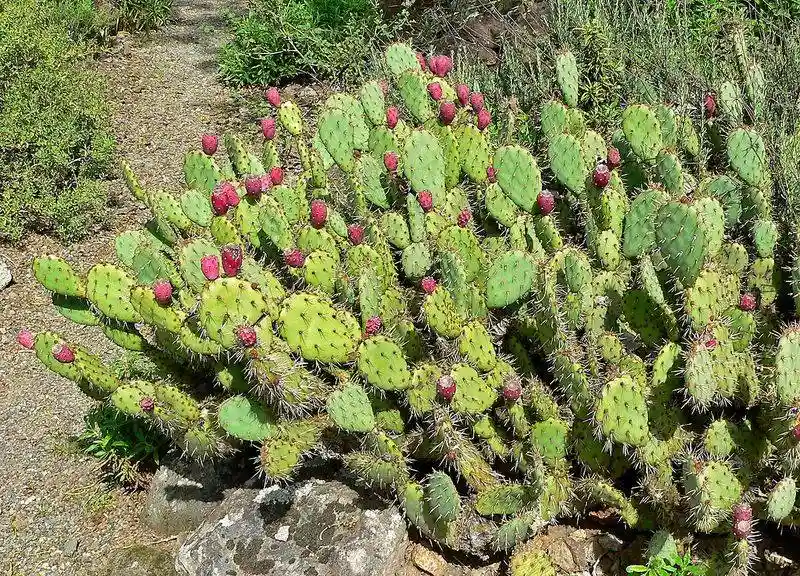
The prickly pear cactus, with its paddle-shaped pads and vivid fruits, is a desert staple. These cacti thrive where others fail, making them perfect for hot, dry climates.
The fruits, often called “tunas,” offer a sweet and subtly tart flavor. Both the pads and fruits are edible, expanding culinary horizons with their unique taste and texture. Known for their resilience, prickly pears require little water and maintenance. This cactus not only adds an intriguing element to gardens but also provides a sustainable, nutritious food source.

